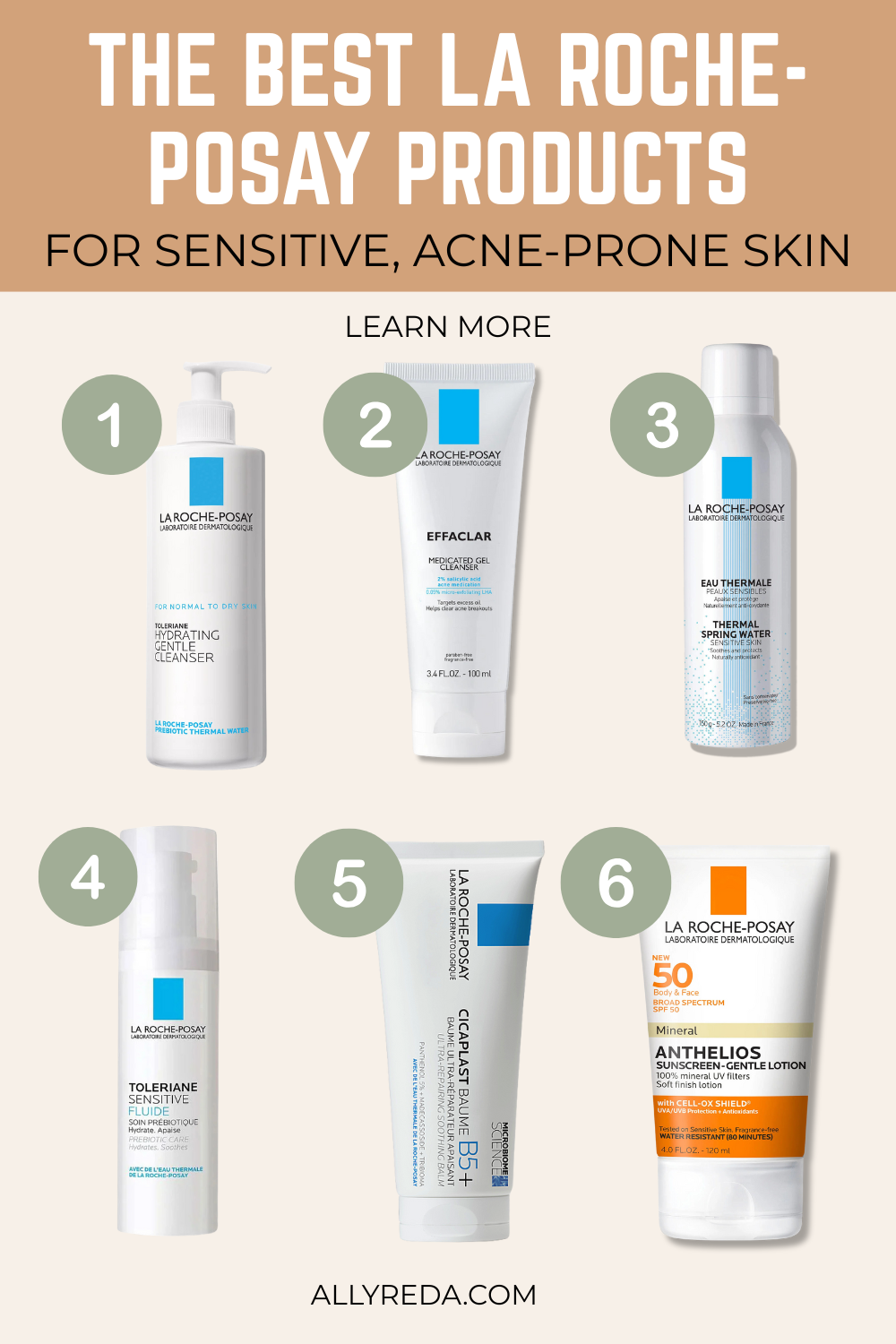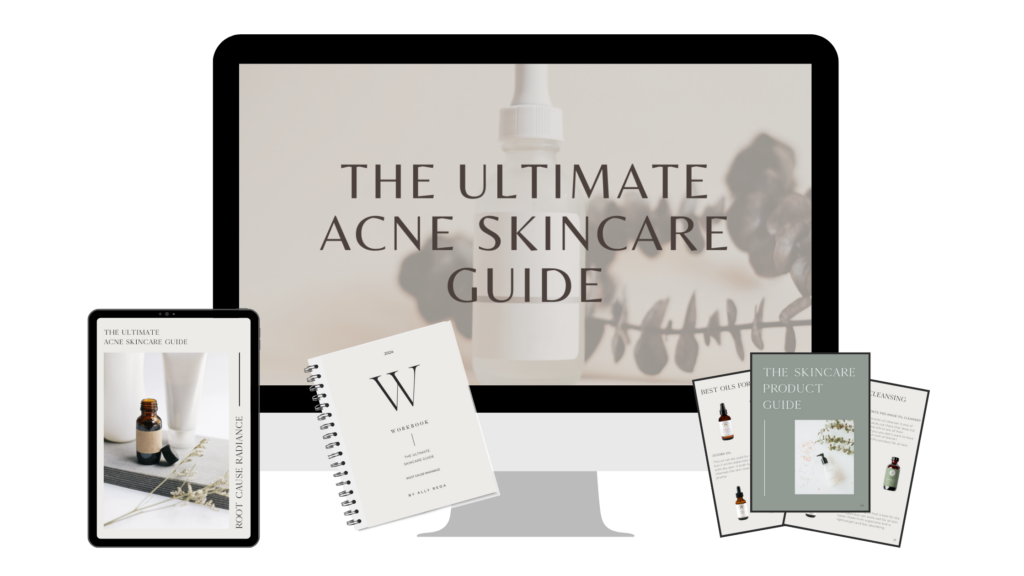The Blog
La Roche Posay | Best Skincare Routine For Sensitive Acne-Prone Skin

Barrier-friendly. Breakout-safe. And finally… no more guessing.
When it comes to acne products, my recommendations aren’t exactly what you’ll find in your average drugstore skincare aisle or even on your derm’s Instagram.
Because here’s the truth: when I was using all the traditional acne products—salicylic acid, benzoyl peroxide, harsh foaming cleansers—my skin was at its worst. It was oily on the surface, but underneath? It was dry, sensitive, and super damaged.
And that’s the part no one talks about. Most acne treatments don’t take your actual skin type or skin barrier health into account. They treat acne like a one-size-fits-all issue. But if your skin is already sensitive or compromised, aggressive treatments can make things worse.
That’s why when someone asks me for a basic skincare routine for acne-prone skin that doesn’t lead to purging, irritation, or over-drying, La Roche-Posay is usually my first stop.
So let’s get into a gentle, effective La Roche-Posay skincare routine that works with your skin, not against it.
Acne Healing Isn’t One-Size-Fits-All
Confused about your skin type? Wondering if your products are helping or hurting? This guide walks you step-by-step through how to choose the right products for your skin, not just what’s trending. You’ll learn how to support your skin barrier, phase your treatments, and finally feel confident in your routine.

Step 1: Cleanse (Morning + PM)
Toleriane Hydrating Gentle Cleanser
A super gentle, no-fuss cleanser that works well for normal, dry, sensitive, or acne-prone skin. Use it solo in the morning or as your second cleanse at night.
Pro Tip: If you’re wearing makeup or sunscreen, start with an oil cleanser first. I show you how to DIY one (without clogging your pores) inside The Ultimate Acne Skincare Guide.
Step 2: Effaclar Medicated Gel Cleanser
Best for: Gently tapering off salicylic acid without shocking your skin
Let’s talk strategy. If you’ve been using a high-strength salicylic acid cleanser and want to stop, you can’t just quit cold turkey. (Trust me, I’ve tried. Your skin will rebel.)
That’s where La Roche-Posay Effaclar comes in—it’s only 2% salicylic acid, so it’s a great transitional cleanser that’s way more gentle than most acne washes.
Use it:
- A few nights per week if you’re weaning off stronger acne cleansers
- As a “maintenance” wash when you want light exfoliation
Remember: Less is more. Acne isn’t a sign to scrub harder—it’s a sign your skin needs support.
Step 3: Thermal Spring Water Spray
Best for: Hydration + calming red, reactive skin
Most people skip the hydration step… but don’t sleep on it. Hydration (aka water) is different from moisture (aka oil), and your skin needs both.
This thermal water is rich in minerals, soothing, and feels like a refreshing misty hug for your face.
Use it:
- After cleansing
- Before applying serums or moisturizer
- Anytime your skin feels hot, itchy, or tight
Feels so luxe. And yes, it’s just water—but somehow it’s magic.
Step 4: Toleriane Sensitive Fluide (Oil-Free Moisturizer)
Best for: Lightweight moisture + barrier support
This oil-free moisturizer is a great pick if you want hydration without clogging pores. It contains niacinamide, which is great for inflammation, but heads up: niacinamide can feel a little drying for some, especially with other actives.
Use it:
- AM or PM (or both!)
- After serums or thermal water
If you have very dry skin, this might not be rich enough. But for combo or oily acne-prone skin? It’s a win.
Step 5: Cicaplast Baume B5
Best for: Spot-treating dry patches, flare-ups, or barrier SOS moments
This viral cream is often misused. It’s not an all-over moisturizer—it’s more like a multi-purpose skin bandage. Use it to treat dry, irritated, or reactive spots.
Use it:
- Around the nose if it’s peeling
- On healing pimples or acne scabs
- For perioral dermatitis or eczema-prone areas
Don’t use it every day unless you’re actively healing something. Think of it as a “treatment,” not a moisturizer.
Step 6: Anthelios Sunscreen (SPF 60)
Best for: Long wear, water resistance, acne-prone skin
This La Roche-Posay sunscreen isn’t my top favorite (because, yes, it has a white cast), but it’s non-comedogenic, water-resistant, and seriously effective.
Use it:
- For long outdoor days, hikes, or beach trips
- When you’re sweating or swimming
Not ideal under makeup due to the texture, but amazing for days when protection is priority.
Final Thoughts
The biggest mistake I see? Treating acne like it only happens to oily skin and not to other skin types.
But here’s the truth: Acne can show up on sensitive, dry, combo, or damaged skin too. And if you’re using harsh treatments on a skin barrier that’s already struggling, you’re just going to make things worse.
That’s why La Roche-Posay stands out—because their formulas are designed to be effective without destroying your face in the process.
Want help figuring out which products your skin actually needs (and which to skip)? Start by identifying your true skin type and building your routine from there. And I’ve made that super easy… Check out the Ultimate Acne Skincare Guide.
Rooting for you always,
Ally
Be the first to comment